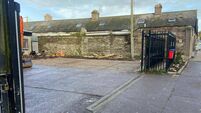Battle of the otter and the mink
One big worry was that they might have a bad effect on our otter population.
Mink are much smaller than otters but they are closely related and they eat many of the same things. The fear was they might win out in the competition for limited food resources. This was particularly worrying because Irish otter populations are of international importance.














